77 Toyota Chinook Camper dually pop up camper all propane appliances fiberglass
- Price:
- Make: Toyota
- Model: Other
- Type: cab/chassis with Chinook Camper
- Trim: Camper special extended frame chassis duelly
- Year: 1977
- Mileage: 4,794
- Color: white and brown
- Engine size: 20R 4 cylinder Gas
- Number of cylinders: 4
- Fuel: Gasoline
- Transmission: Manual 5??
- Drive type: rear wheel drive
- Interior color: orange/ brown
- Vehicle Title: Clear
- Location: Chichester, New Hampshire, United States
Description
Three noteworthy changes with the 1975 model was the addition of a steel reinforced frame, frame-mounted step bumper and the larger 20R cross-flow engine. The frame added dimensional rigidity and durability to the entire vehicle, which was a natural safety selling point with Toyota dealers. The peppy 2.2 liter 20R engine also gave the Toyota-Chinook the power to perform both on the highway and in city traffic, with either manual, or a newly added automatic transmission.
The newly enhanced Toyota-Chinook sported an upgraded chassis built specifically for RV use; the truck’s 101.7-inch wheelbase was stretched to 110 inches and equipped with an 8” ring and pinion third member (AKA heavy duty) and stouter tires, compared to the standard 7.5” rear gear on the earlier models. The larger platform took care of weight and handling issues and the Chinook team took care of the rest. The coach builder fitted the diminutive chassis-mount camper with the sleek fiberglass shell that concealed an impressive number of comforts without presenting a cumbersome profile.
With a base price of under $7995, the Toyota-Chinook line was considered three vehicles in one: Economy car, station wagon and motorhome. Featuring the legendary Toyota “R” series of powerplants, the Toyota Chinook – sometimes affectionately referred to by its owners as “The Toy”, “Toynook”, “Chinyota”, or “Little Chinook” – was one of the most popular recreational vehicles on the road during the mid-70s, particularly with the Southern California surf and action sports culture.
For starters, it offered excellent fuel savings: up to an astounding 29 miles per gallon on the highway and 16 mpg in city driving despite meeting stringent California emmission standards. For any type of RV today with current powerplant technology, few could match it, including the new class B van conversions based on the diesel-powered Sprinter chassis that manages 16-22 mpg (albeit somewhat heavier than a Toyota-Chinook).
It was also compact. Not quite 17 feet long and 77 inches high (closed), the Toyota-Chinook offered weekenders a stainless steel two-burner butane gas stove, 2.3 cubic-foot icebox, a long six-foot, eight-inch convertible L-shaped dinette and sofa that turned into a full size bed. An optional, pull-out extension for an over-cab bunk allowed for two small children to sleep in the vehicle, once the spring-latched pop-up top was unlatched – the design of which owed much to the original push-up tops seen in the full-size van conversions. Open, the coach boasted six feet of headroom for an adult – once parked – to stand up and move around inside the mini-camper; Closed, it offered a low profile which contributed to its car-like handling and fuel-saving economy, as well as a possible mounting location for roof racks to carry surfboards, kayaks or skis.
Granted, it still had a few drawbacks. For starters, it didn't have an enclosed bathroom, although a “porta-potty” toilet was now available as an option. It also ran on DC power exclusively and the sink “drain” consisted of an outside fitting to which owners attached a hose leading to a container. However, it also was capable of traveling more than 250 miles on a single fill-up of its 13.7-gallon gas tank, and could sleep up to four people in a vehicle just under 18 feet long.
 Toyota Hilux Chinook Camper
Toyota Hilux Chinook Camper
Mileage: 70,121
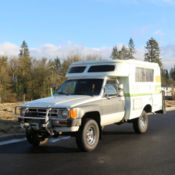 1984 Toyota Chinook 4X4 Camper, pop top, straight axle
1984 Toyota Chinook 4X4 Camper, pop top, straight axle
Mileage: 187,333
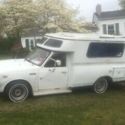 Toyota Chinook Hilux truck Rv motorhome camper camping
Toyota Chinook Hilux truck Rv motorhome camper camping
Mileage: 149000
 1977 Toyota Chinook popup camper southern California car was running before park
1977 Toyota Chinook popup camper southern California car was running before park
Mileage: 00000
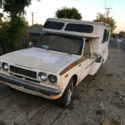 It's a RACECAR & Place to Call Home! Toyota Hilux Chinook Fully Cage Race Camper
It's a RACECAR & Place to Call Home! Toyota Hilux Chinook Fully Cage Race Camper
Mileage: 98000
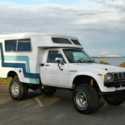 Camper truck off-road 4wd 4x4 chinook pop top expedition vehicle van
Camper truck off-road 4wd 4x4 chinook pop top expedition vehicle van
Mileage: 227376
 1988 Toyota LiteAce 4x4 JDM Camper Van
1988 Toyota LiteAce 4x4 JDM Camper Van
Mileage: 47,350
 1991 TOYOTA PICKUP - DELUXE EXT. CAB SB W/CAMPER
1991 TOYOTA PICKUP - DELUXE EXT. CAB SB W/CAMPER
Mileage: 1250251
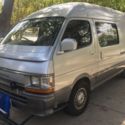 1992 Toyota Hiace off-grid camper
1992 Toyota Hiace off-grid camper
Mileage: 135000
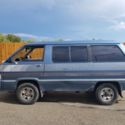 1988 Toyota 4x4 Van VanWagon LE Syncro Truck Camper
1988 Toyota 4x4 Van VanWagon LE Syncro Truck Camper
Mileage: 286600











